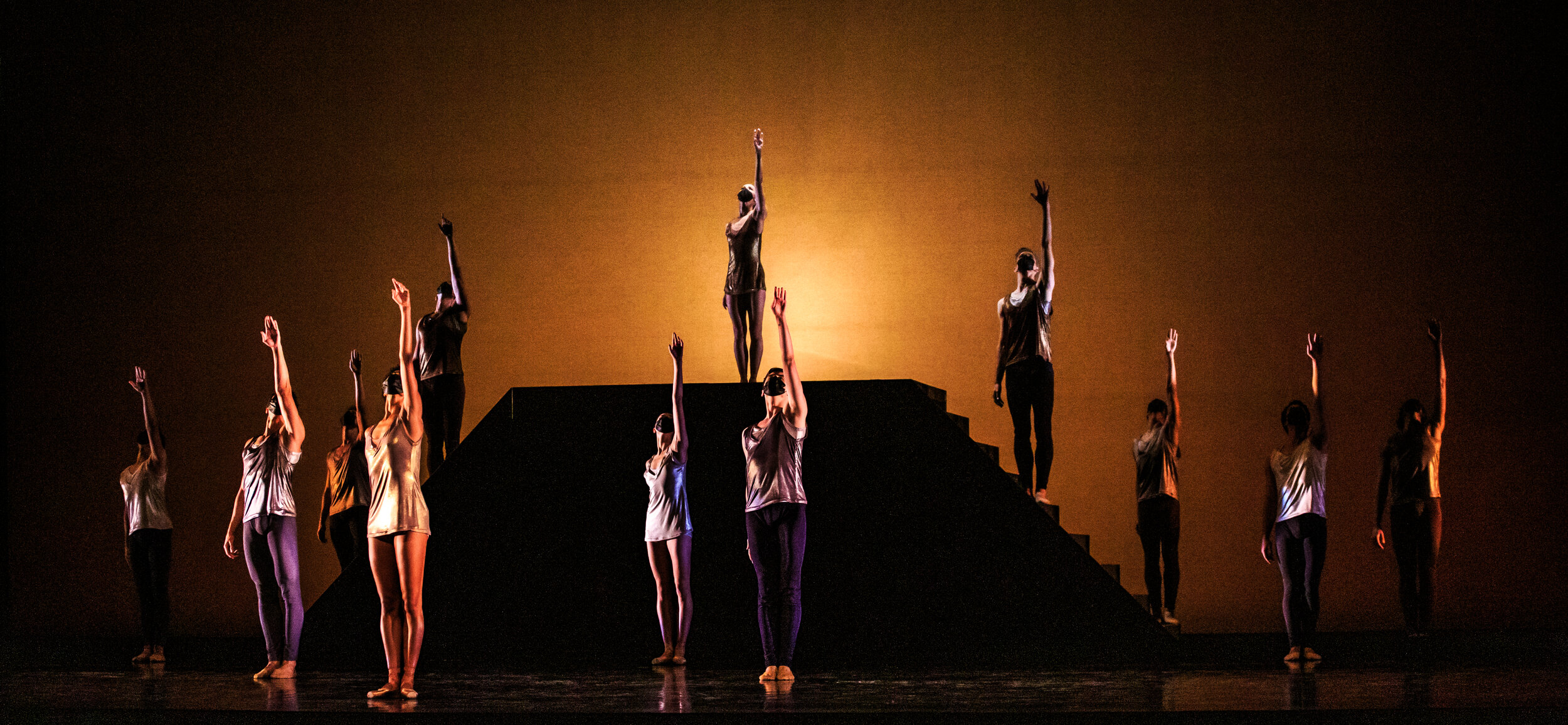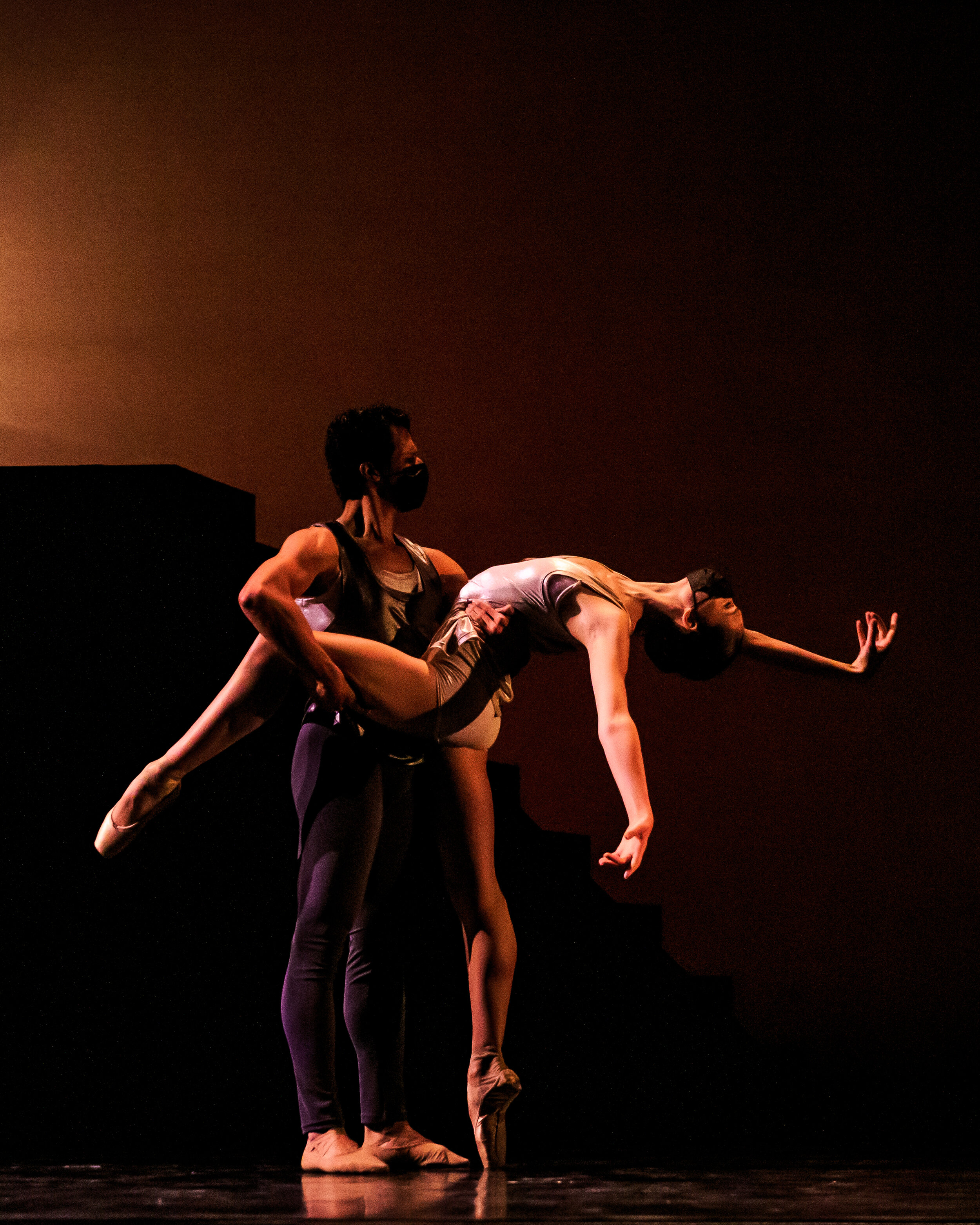I have not seen (this version) of Nine Sinatra Songs by Ballet West and have no plans to review it. In this show, which was given locally at the Capitol Theatre, Ballet West ignores that more than one in one hundred people in Utah have COVID-19 and they refuse to talk about it. I understand that there were masks and other hygiene measures, but of course no one goes to the ballet for the social distancing.
People are asking whether Ballet West’s type of show is the new art form. Potentially killing strangers as an art form? Yes, yes, I suppose disease can be art in a screwily post-neo-Dada sense. But this is not the sense intended by Ballet West, even though some of their programming is billed as experimental.
If I understand Ballet West here, and I think I do — the publicity has been deafening — it is a kind of messianic return to the theater, designed to do some good for sufferers of fatal illnesses, both those in the cast and those who may be in the under-capacity audience. If we ask what a show does that no hospital, clinic, church, or other kind of relief agency has so far been able to do, I think the answer is obvious. If we consider that the experience, open to the public, as it is, may also be intolerably dangerous, the remedy is also obvious: Don't go. In not reviewing Ballet West, I'm sparing myself and my readers a dangerous experience, and I don't see that I really have any choice.
A critic has four options: (1) to see and review; (2) to see and not review; (3) not to see; (4) an option — to write about what one has not seen-becomes possible on strange occasions from which one feels excluded by reason of its express effects, which are more intelligible than theatre. I don't deny that seeing dance in a pandemic may be of value in some wholly other sphere devoid of responsibility, but it is as theatre, dance theatre, that I would approach it. And my approach has been cut off. By ignoring dying Utahns to produce their act, Ballet West has put themselves beyond the reach of criticism. I think of them as literally refusing to discuss the public as their victims and their artistry as martyrdom.
In theatre, one chooses what one will be. The pre-symptomatic or asymptomatic audience members at Nine Sinatra Songs will have no choice other than to be sick. The fact that they are there in person intensifies the starkness of their condition. They should be there on videotape, the better to be seen and heard, especially now. They are the prime exhibits of a company administration which has crossed the line between theatre and reality — who thinks that victimhood is a sufficient presupposition to the creation of an art spectacle.
The thing that Nine Sinatra Songs makes immediately apparent, whether you see it or not, is that ignoring the pandemic is a kind of mass delusion that has taken hold of previously responsible sectors of our culture. The preferred medium during a pandemic is video (see your computer at almost any hour of the day), but the cultivation of in-person attendance demanded by institutions devoted to the care of art is a menace to all art forms, particularly performing art forms. The critic is part of the audience for art that COVID-19 also threatens. I can't review someone I am worried for or hopeless about. As a dance critic, I've learned to avoid companies who ignore the obvious problems with their events in context of our larger society.
The strategies of dance companies as the victims of pandemic are proliferating marvelously at the moment. There's no doubt that the public is filled with much more hardship, which companies will meet with fewer patrons and less applause. This a politicized version of blackmail, that certain companies have resorted to, in a self-pitying moment. Instead of compassion for Utahns truly suffering, they invite a cozy kind of complicity demanding that their audience support local artists. This perfect, mutually manipulative union is formed which no Governor has put asunder.
Photo by Luke Isley, courtesy of Ballet West.
Those who have read New Yorker critic Arlene Croce’s original essay “Discussing the Undiscussable” will realize that I have more or less stolen it to make a comparison between Bill T. Jones’ piece Still/Here (made during the early years of the AIDS crisis) and Ballet West’s Nine Sinatra Songs (produced during the coronavirus pandemic).
It’s worth noting that my criticism is more than witty plagiarism. Ballet West has made headlines for contributions to racial justice such as: calling for more pointe shoe shades and being part of the “final bow for yellowface” in The Nutcracker. However, just like they’ve made no change to other equally racist divertissements, Nine Sinatra Songs ignores not only that the pandemic rages on but that it disproportionately impacts Utahns of color and low-income Utahns. The danger of opening the theater is not only for affluent, masked patrons, but for all employees of Salt Lake County.
Another danger that’s misconstrued? Using (exclusively heterosexual) married couples for pas de deux underscores the heteronormativity of concert dance, while also pretending that their safety will somehow extend to the audience.
Arlene missed out on some of why Still/Here was important; the dance looked at HIV/AIDS and other chronic and/or terminal illnesses as something that impacts more than one group. While many Americans failed to apprehend that AIDS wasn’t only a crisis for (cisgender white) gay men, we seem to have done the inverse. We assume that the pandemic applies only to smaller subgroups and do not acknowledge the way a space, like a theater, impacts us all.
Ashley Anderson is the founder and director of loveDANCEmore and Ashley Anderson Dances. At the time of writing, the state of Utah is at a 20% average positivity rate for COVID-19 with neighborhoods near the theater at over 30%. 661 Utahns have died.









